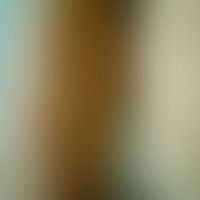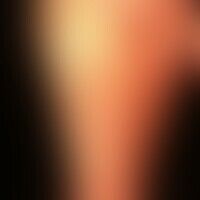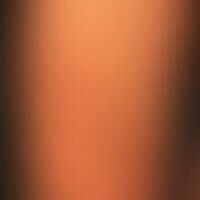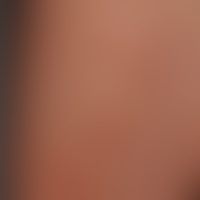Image diagnoses for "Leg/Foot"
404 results with 1180 images
Results forLeg/Foot
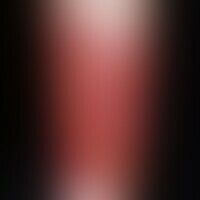
Phototoxic dermatitis L56.0

Primary cutaneous marginal zone lymphoma C85.1
Primary cutaneous marginal zone lymphoma: painless brown plaque with central nodular formation that has existed for several months; no evidence of systemic involvement.

Brucellosis (overview) A23.9

Tinea cruris B35.8
Tinea cruris: chronic plaque, slightly faded at the centre, accentuated at the edges, large, moderately itchy plaque with interspersed pustules and inflamed papules.
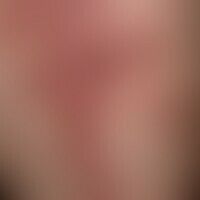
Hypertrophic Lichen planus L43.81
Lichen planus verrucosus: detailed view of the distal parts. marginal smaller partly solitary parts aggregated reddish shining papules. crusts caused by scratching effects (indication of the obviously "punctual" localized itching). the blown off parts point to atrophic areas (scarring).

Lichen planus (overview) L43.-
Lichen planus exanthematicus: disseminated sowing of small red papules and confluent plaques.

Glomangiomas multiple D18.0
Glomangiomatosis, generalized. palm-sized bundle of livid vessels shimmering through the skin, partly tendril-shaped vascular ectasia at the back of the thigh in a 7-year-old boy.

Lymphedema (overview) I89.00
Lymphedema: chronic lymphedema in recurrent erysipelas with pronounced verrucous transformation of the skin (papillomatosis cutis lymphostatica).

Erysipelas A46
Erysipelas. painful redness and swelling of the left foot in a 65-year-old man with fever. In addition, in the corresponding lymph drainage area of the groin region single enlarged lymph nodes can be palpated.

Bullous Pemphigoid L12.0
Pemphigoid, bullous. large, garland-shaped bordered urticarial erythema as well as large, locally confluent hemorrhagic and skin-coloured blisters in an elderly patient.

